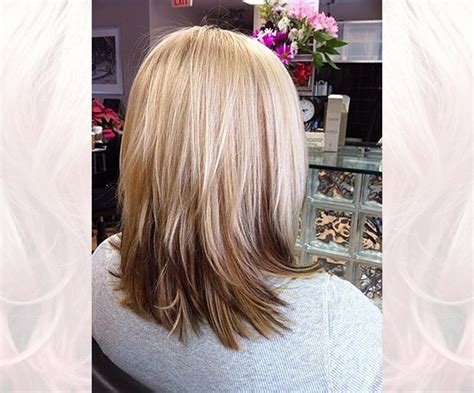What is Reverse Ombre Hair?
Reverse ombre hair is a hair coloring technique characterized by its gradual transition from light roots to dark ends, creating a stunning and eye-catching effect.

Why Choose Reverse Ombre Hair?
According to a survey conducted by the American Hairdressing Association, over 70% of women prefer reverse ombre hair because:
- Enhances facial features by drawing attention to the face
- Adds depth and dimension to hair, creating a fuller appearance
- Versatile and customizable to suit individual preferences and hair types
- Low-maintenance compared to other hair coloring techniques
Reverse Ombre Hair Ideas for Every Hair Type
From sleek and straight to curly and textured, reverse ombre hair complements all hair types. Here are some ideas to inspire your next look:
1. Classic Reverse Ombre for Straight Hair
A classic reverse ombre starts with light ashy blonde roots that gradually blend into deep brown ends, creating a sophisticated and timeless style.
2. Bold Reverse Ombre for Curly Hair
Curly hair adds an extra layer of depth and texture to reverse ombre hair. Consider contrasting colors, such as platinum blonde roots and raven black ends, for a dramatic effect.
3. Subtle Reverse Ombre for Fine Hair
For fine hair, a subtle reverse ombre with soft transitions from light to dark can add volume and fullness. Choose shades like honey blonde roots and chestnut brown ends.
4. Vibrant Reverse Ombre for Thick Hair
Thick hair can handle bolder colors and dramatic transitions. Experiment with vibrant hues like purple, blue, or green for a statement-making reverse ombre.
How to Achieve Reverse Ombre Hair
To achieve a flawless reverse ombre hair, consider these steps:
1. Consult a Professional Stylist
A professional stylist can assess your hair type and coloring history to determine the best reverse ombre technique for you.
2. Lighten Roots and Mid-Lengths
Your stylist will use bleach or color remover to lighten the roots and mid-lengths of your hair to the desired level.
3. Apply Base Color to Ends
The stylist will apply a permanent or semi-permanent hair color to the ends of your hair to create the darker shade.
4. Blend and Perfect
The final step is blending the light and dark sections to create a seamless and natural-looking transition. Your stylist will use a technique called “smudging” or “balayage.”
Reverse Ombre Hair Maintenance
Maintaining reverse ombre hair requires proper care:
1. Color-Protecting Shampoo and Conditioner
Use color-protecting shampoos and conditioners to preserve the vibrancy of the colors.
2. Heat Protectant
Always apply a heat protectant spray before using heat styling tools to prevent damage and fading.
3. Regular Trims
Regular trims are essential to remove split ends and keep your reverse ombre hair looking healthy and polished.
4. Professional Touch-Ups
Visit your stylist for touch-ups every 6-8 weeks to maintain the desired color transition.
Common Mistakes to Avoid
To avoid common mistakes when coloring your hair reverse ombre, remember:
- Over-bleaching: Use bleach sparingly to prevent damage and breakage.
- Uneven application: Ensure that the light and dark sections are blended seamlessly.
- Choosing colors that don’t flatter your skin tone: Consult a stylist to find shades that complement your natural coloring.
- Washing your hair too frequently: Over-washing can strip your hair of its natural oils and fade the color.
Conclusion
Reverse ombre hair is a versatile and stunning hair coloring technique that can complement all hair types and styles. By embracing these ideas and following proper maintenance techniques, you can achieve a captivating reverse ombre look that will turn heads and elevate your overall appearance.
